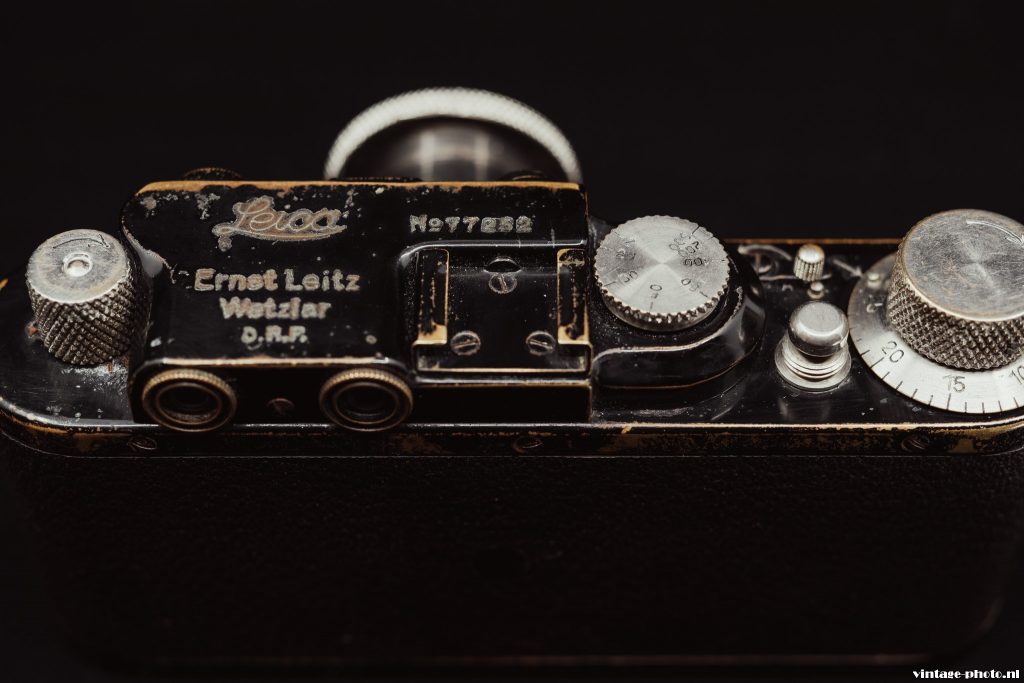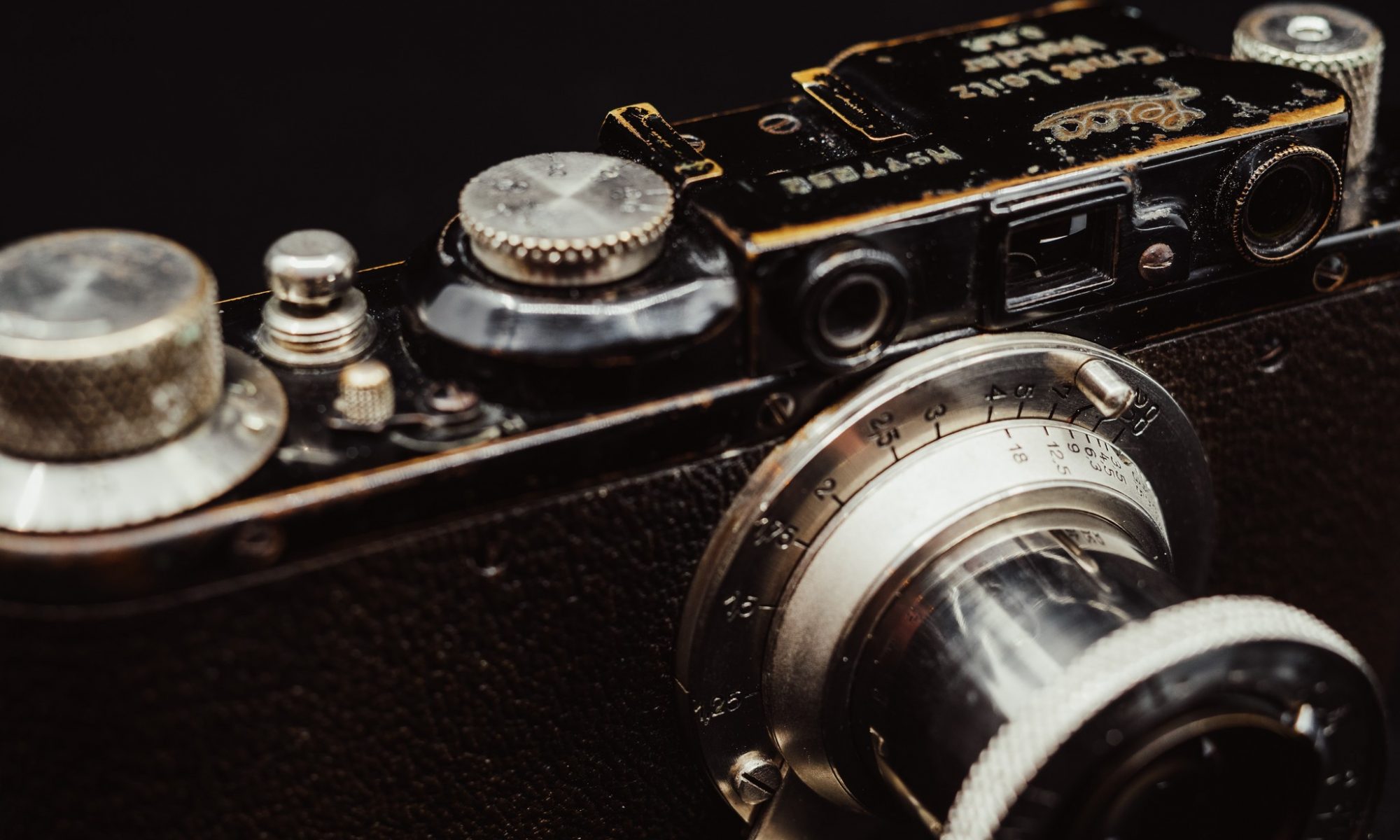The year is 1932. In the central German town of Wetzlar, the first Leica IIs roll off the production line. Handmade by mechanics in white coats. Following the Leica I with a simple viewfinder, Oskar Barnack succeeded in integrating a rangefinder into his camera. It would change the history of the Leitz company forever.
I look at my Leica IIIa, a beautiful 1934 chrome version, converted in 1954 to a leica IIIf, in an at that time very common process for hardware updates in cameras to modern, new technology, such as a faster shutter speed or a connection for flash. All carried out by by Leica professionals. In those days a camera deserved a second life, even after 20 years. Especially as sturdy built Leica. It is a camera for life. Your most precious moments caught with this small companion. A Leica becomes part of the family. It ends up in Granddads drawer and is finally passed on to a next generation. That is the life cycle of a Leica. At least, it was in the opinion of Leitz and Barnack. Now I look also at my new Leica II. From 1932. More of the same of something unique (again)?

Already back in 1913 the UR-Leica was invented by Oskar Barnack, engineer at the Ernst Leitz Optische company. Barnack himself was a passionate travel photographer, but the cameras that existed were big and heavy and only used on tripods. Also they could only use plates, each plate making only one picture. Barnack dreamed of a compact camera that could use a film roll, that was portable.
The history of Leica reads like an exciting boys’ book. Oskar Barnack dreams of a ‘Lilliputter’ camera for the general public in Ernst Leitz’ microscope factory. Initially approached with disbelief, he manages step by step to convince Leitz of the potential of this miniature camera and after a successful visit of Leitz in New York where he used and showed the Leica the press responds enthusiastically to this little German toy. Barnack is allowed to continue developing. First he created the Leica’s alphabetically, starting with the A with a fixed lens, till the first ‘standardized’ C model (Leica I) with interchangeable lenses and soon the Leica II (D-model) and III (F-model) quickly followed one another. Barnack’s enthusiasm is great, his creativity and inventiveness endless. The changes were so fast that the Leica numbers were accompanied by a sub number for noticeable innovations (e.g. Leica IIIa, b, c,..). In 1936 Barnack unfortunately died of pneumonia. The IIIa is the last model made before his death. His legacy however lives through history. The Barnack Leica is and remains the most legendary camera and his successors continue to work in style with his basic idea on the later M series which is still popular today, albeit in digital form.

A Leica is a feeling (as we called it in our previous review of the Leica III). The camera exudes an unprecedented purity. A lived-in look as it ages, discolored so that the brass shines through the black paint. But inside, the heart beats on.The indestructible shutter, entirely mechanical with miniscule parts of springs, screws, cog wheels. Maybe they need to be lubricated after ninety years, maybe the rangefinder needs adjusting. But the heart continues to beat. The only question that remains is who has already taken photos with this. What journey has the camera made and will it make, hopefully also long after me?

Specs Leica II (model D), produced between 1932-1948 (40.000 made in black, 37.000 made in Chrome)
- 135 film camera (24×36mm) for 36 exposure films
- Shutter speeds /s: 1/500, 1/200, 1/100, 1/60, 1/40, 1/30, 1/20
- Rangefinder, 50mm finder, Leica Thread Mount (LTM, M39)
- Cold shoe (accessory for Angular View finder (‘Wintu’), universal finders for different focal lengths (e.g. ‘Vidom’) and small finders for 35, 50, 73, 90, 105 and 135 mm lenses, reflecting viewfinder (waist finder)
- Standard lens: Leitz Elmar 50mm F 3.5 or Leitz Hektor 50mm F 2.5
- Wide lens: Leitz Elmar 35mm F3.5
- Tele-lenses: Elmar 90mm, F4, Elmar 105mm, F6.3, Elmar 135mm, F4.5. Hektor 73mm, F1.9
In the thirties users could load the Leica with their own film, spooled up in a dark room or daylight loading spools, not the 135 film cartridges we know and were used later. A special film trimming template was useful to cut the first 10 cm of the film to fit and wind correctly in the body. This is also an issue for the later III model and if you want to use an old Leica, look at this video from ‘Mr Leica’ for the correct trimming (with a scissor) and loading.
How to take a picture with a Leica? It is basic, but a special experience! First you have to pull out the lens and turn it to the right so it is fixed. Adjust the aperture on the lens, wind the film with the right knob till it stops. Lift the shutter dial and at the correct speed, let it settle in. At T(ime) or Z(eit) (later called Bulb) the shutter stays open till you release the button. Sight the object through the rangefinder, use the focussing lever on the lens until the two images coincide. Focus through the other window for the whole frame and press the shutter button and experience the unique sound of a Leica mechanical shutter that is (almost) 90 years old.

A Barnack Leica looks like a collectors item, and it is, true, but even in 2021 it produces sharp pictures due to the very high quality of the Leitz lenses. It is part of the success of Leica. The original Elmar lenses had a maximum aperture of f/3.5 and derived from a 50 mm f/3.5 Elmax lens first produced in 1925 by Max Berak. Five lenses in three groups, 10 blades in the aperture. Even today I am still impressed with the sharpness of these old lenses, even attached to a modern digital DSLR. Buying a Leica lens is a true investment, they are all but cheap, but maintain their value, in money but above all, in outstanding quality. The same goes for the Leica Barnacks. They are commonly found on Ebay, but be careful, many have switched from owner to owner without a decent CLA, a complete overhaul in terms of calibration, lubrication and adjustments. The cameras deserve this service and the good news is many professionals all over the world can be found to perform this delicate task to disassemble these old jewels and make them come out as in the first day of their existence. Parts are widely available, from shutter curtains to knobs.
I own two Leica Barnacks, a Leica II and a Leica IIIa. The difference is there, the II is an unmodified, original camera and the IIIa from 1934 became a IIIf after its update in 1954. The II is more basic, limited shutter speeds and no connection for flash. Even no slugs. Pure.
And there may be more of them to collect. Why? A Barnack is a joy to use. It is grace to hold. The camera exudes authenticity, pure photography. The devices are compact, easy to use, for black and white, for color films. Results that look vintage, evoke the characteristic atmosphere in which decades have been spent looking at the world, at people, and also allow us today to revive the past in the present. But I’ll leave it at those two, because others should also have the chance to purchase a Leica and feel what it is like to use and own a Leica Barnack.
Update June 2021: pictures made with the Leica II:




















You got close. I own the 27th model 11 and a friend of mine, owns the fifth. Yes, the camera is a icon.
I received my leica II from 1932 today. It has had a cla turn. I can’t wait to try it out!
Congratulations Dieter, I can assure you that it will live up to your expectations!
In my opinion the Leica II is the best camera design ever made. It’s size/weight/tactile handling has never been surpassed.
I have an early ‘39 II and a Canadian ‘54. IIIf
Still fictional.